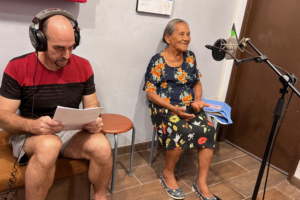
In our latest field update, Dr. David Fleck reports on the launch of a second interactive phone application to support the Kukama, one of Peru’s largest indigenous groups, as their communities seek to restore and revitalize their native language from being lost. This new app features a fun, word-matching game for kids on the ecology of local rainforest plants and animals in the Kukama language!
This app, which can be freely download here from the Google Play Store, is the 12th and latest in a series of successful applications built by Acaté from the ground up with communities in the Peruvian Amazon. Our educational applications have different designs, depending on goals of the ethnic group with whom they are designed.
In the case of our Kukama apps, the primary goal is to contribute to the revitalization of the highly endangered Kukama language. The Kukama, being located along the Amazon River and its larger tributaries, were one of the first indigenous peoples to be contacted by Spanish invaders 500 years ago. Subsequently, their population was decimated by introduced diseases and the violence of the rubber boom, yet they continue to be one the most numerous ethnic groups in the Amazon basin, with a total population estimated at 36,000, spread out in small villages in Peru, Colombia, and Brazil.
Due to intense racial and linguistic discrimination, most Kukamas began to hide their ethnic identity and stopped teaching the Kukama language to their children. During the past few decades, however, the Kukama have begun to revalue their culture and are in the process of reclaiming their ethnic identity. For example, residents of the Kukama village of Manacamiri, located 10 minutes from the city of Iquitos, have declared their village to be an indigenous community, elected a village chief, requested bilingual education from the Peruvian ministry of education, and established an association for marketing their traditional handicrafts.

Kukama village of Manacamiri ©Acaté
A priority among the cultural revaluation goals of Kukama communities is to revitalize their ancestral language. The ability to communicate in their ancestral language fosters pride and ethnic identity and is both a political asset and means of unity for the Kukama nation throughout Peru, Colombia and Brazil. Unfortunately, there remain today only a handful of elders who are still able to speak the language fluently. Most Kukama villages do not have any elders who can teach the language, and educational materials in the Kukama language are scarce. In response to this situation, Acaté Amazon Conservation has teamed up with Kukama elders to document their language and elaborate fun language learning materials available to all the Kukama communities.
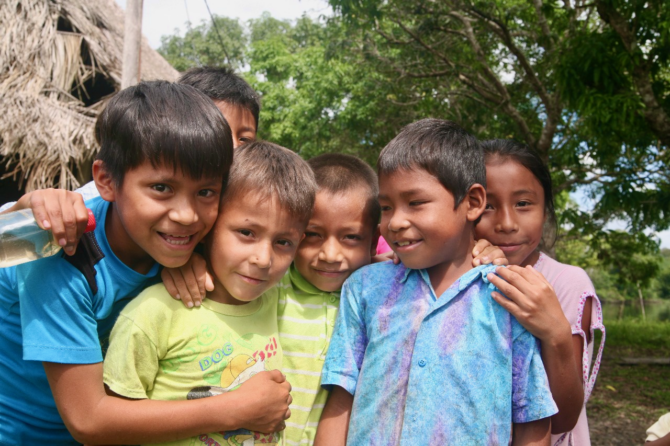
The Memoria Kukama Phone Application
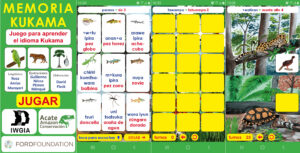
Upon downloading and playing the new Memoria Kukama game, the user will notice a focus on animals, plants, and habitat types. This reflects our second goal, which is to preserve traditional ecological knowledge to help pass it on to the next generation. Since prehistorical times, the Kukama have been fishing, hunting and farming along the Upper Amazon River and its major territories, without depleting resources, degrading the ecosystems, or causing local extinctions.
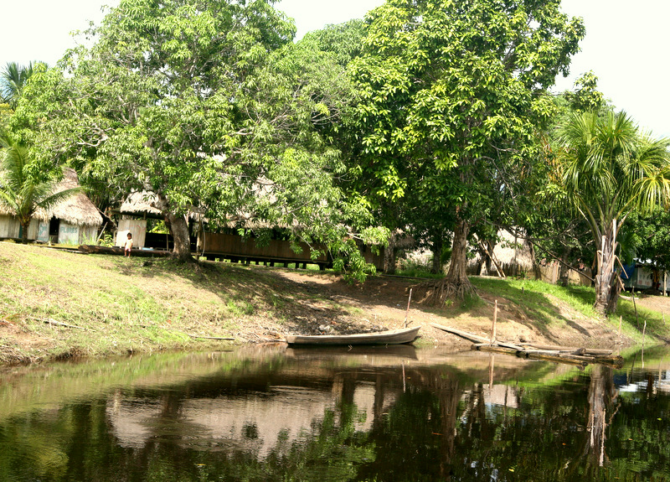
Kukama community ©Acaté
The basis for this ability to subsist without destroying the environment is the Kukama´s extensive knowledge of the flora, fauna, and ecology of the aquatic and rainforest habitats in which they live. When this traditional knowledge is lost, the ability to subsist in harmony with nature is lost, and descendants turn to extractive and commercial activities to earn a living, or migrate to cities.
With this in mind, the Memoria Kukama game is designed to help the younger generation learn their ancestral language while playing an entertaining and challenging game, and at the same to familiarize them with the plants, animals and ecosystems in their territory. The 40 game levels are ordered in the manner an expedition, which takes the player from a Kukama village to different types of farms, then to various aquatic habitats, and finally to primary rainforest ecosystems, earning medals along the way as they learn the Kukama names of the local flora and fauna in each habitat.
We worked closely with Kukama elders to document their traditional knowledge about which of the 360 animals and plants are found in the different habitats. For example, not all species of fish are found in lakes, and certain species of trees are restricted to seasonally flooded forest.
Kukamaru Animaru Phone Application
Published in 2022, Kukamaru Animaru was the first application developed by Acaté Amazon Conservation with the Kokama communities. This interactive app features more than 600 species of mammals, birds, reptiles, amphibians, fish, insects, and other invertebrates that are native to the Kukama territory and for which the Kukama language has specific names. Each species is accompanied by an illustration, the name of the animals in Kukama and local Spanish, and a sound clip of the Kukama name that plays when the image of the animal is tapped.
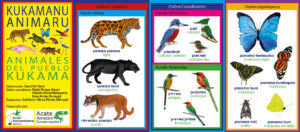
The Kukamaru Animaru app is taxonomically organized to help learners distinguish similar species. It can be considered a type of field guide in the Kukama language, that will help young Kukamas become familiar with the local fauna, which is essential for continuing to be effective stewards of their ancestral territories This app is currently being used in as a native language learning tool in some Kukama schools.
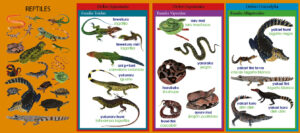
Why cellphone apps?
As elsewhere in the world, a recent trend in indigenous communities in Amazonian Peru is the widespread use of cellular telephones, especially among the youth. Even in villages that lack telephone service and internet access, young people spend a lot of time using cell phones to listen to music, watch videos, take and edit photos, and play video games that they download when they are in places that have internet service. Rather than lament this trend as an “unproductive waste of time¨, Acaté´s education initiative takes advantage of this technological opportunity to create applications for learning the Kukama language and traditional ecological knowledge. Second-language learning requires a significant investment of time, and while it is easier for children than for adults, children can lose interest if the learning process is not entertaining. Taking these factors in mind, Acaté strives to make educational applications that are entertaining, engaging, challenging, and attractive. If Kukama children spend enough time playing with language-learning applications, we believe we can contribute significantly to the revitalization of the Kukama language. We are currently seeking funding to create more application for revitalizing the Kukama language.
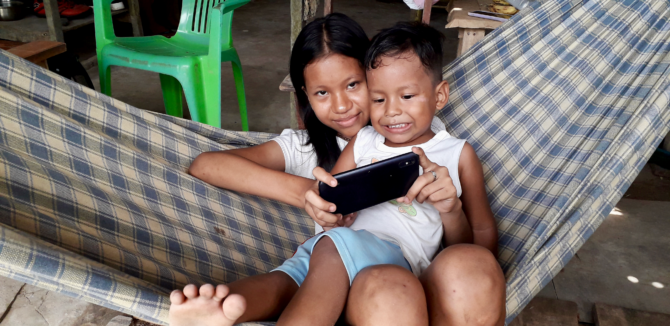
Key team members for the production of the Kukama apps:
Meet Rosa Amías Murayari, expert on the Kukama language, culture, and ancestral knowledge. Rosita was born in a homestead along the Marañón River in the vicinity of the Kukama village of Parinari. She did not learn Spanish until she moved to a larger village to study in primary school. Her parents and other older relatives were monolingual in the Kukama language. Only when her mother passed away when Rosita was 30 years old, did she stop speaking Kukama on a daily basis.
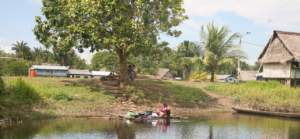
Kukama village of Parinari ©Acaté
As far as we have been able to learn, Rosita is the most competent living speaker of the Kukama language. As such, she is invaluable for the revitalization of the Kukama language, and it has been a pleasure and an honor to work with her in the production of these apps. In addition to her knowledge of the language, Rosita is also an expert on Kukama subsistence strategies and on the ecology of the rivers, lakes, and forests where she lived during her youth.
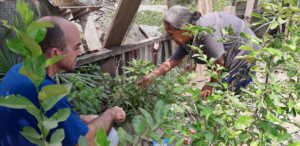
Rosita teaching Dave the names of plants in her dooryard garden ©Acaté
Rosita co-authored a comprehensive Kukama-Spanish dictionary, which was an important resource during the initial stages of the elaboration of both of Acaté´s Kukama language apps. Rosita has been engaged as a Kukama language teacher by the FORMABIAP, an institute in Iquitos that trains young Kukamas and members of other Peruvian ethnic groups to be bilingual schoolteachers. Currently, Rosita lives in the city of Iquitos, and has been essential for developing the Kukama applications, teaching us the names of plants and animals and the habitats in which they live, and providing recordings for the apps.
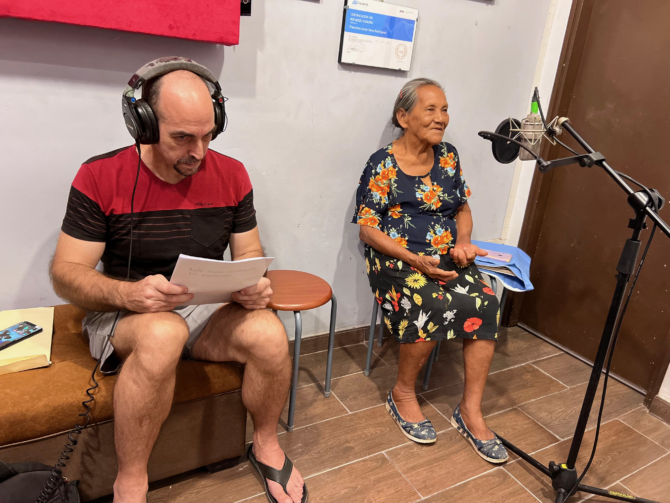
Rosita and Dave at recording studio in Iquitos. ©Acaté
Rosita is endeavoring to teach her grandchildren to speak Kukama. Now, through the apps that she is helping Acaté to develop, her teachings will reach thousands of Kukama children and youth in Amazonian Peru, Colombia, and Brazil.
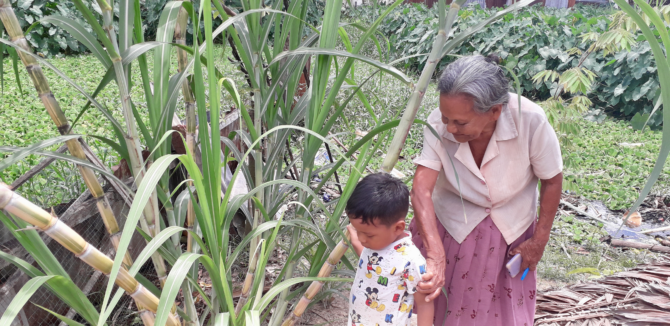
Rosita teaching her grandson the Kukama names of plants in her garden.©Acaté
Meet María Ricopa Aricari, Kukama language teacher. María, who lives in the Kukama village of Manacamiri, has been a key team member in the production of Acaté´s Kukama educational apps. María spoke only the Kukama language when she was a child, but her parents died when she was a girl and then she had no one with whom to speak Kukama. Consequently, she had forgotten much of what she knew of the Kukama language. Nevertheless, it was surprising to find that the more we worked with her, the more she remembered, and the more ample her teachings became. This taught us an important lesson about judging language proficiency. María collaborated with in the development of both of Acaté´s Kukama apps.
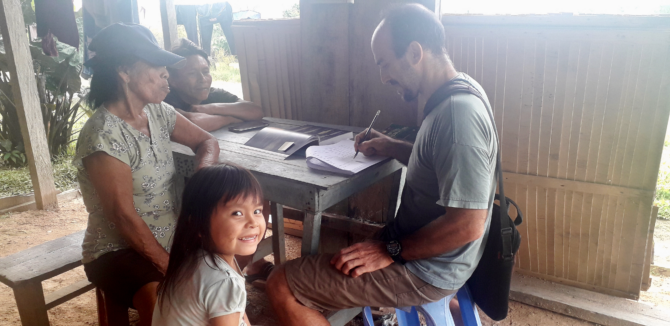
Elicitation session with María in Manacamiri ©Acaté
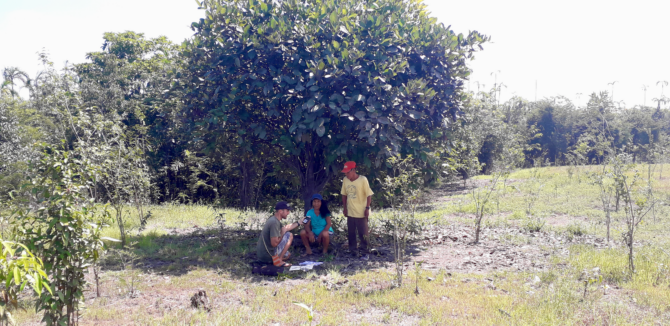
Recording session in Manacamiri ©Acaté
Meet Guillermo Nëcca Pëmen Mënquë, indigenous artist and expert on rainforest ecology. Guillermo has been working with David Fleck and Acaté Amazon Conservation since 2014 drawing more than one thousand beautiful and life-like images of rainforest animals, plants, and ecological scenes. He is a self-taught artist, but the knowledge of rainforest natural history that makes his art anatomically and ecologically accurate, he learned from his father and other elder relatives during hunting expeditions and while harvesting forest foods and collecting medicinal plants. His drawings make the apps and books attractive to the children, making these pedagogical materials more engaging.
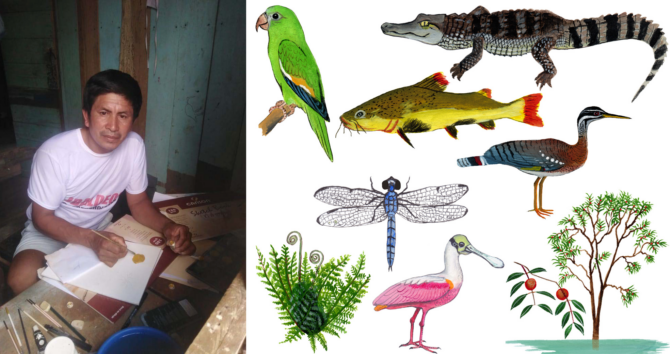
Guillermo drawing at his home, and a sample of his artwork that was used in the Kukama apps ©Acaté.
We would like to express our gratitude to the International Work Group for Indigenous Affairs (IWGIA) and the Ford Foundation, who generously financed the Memoria Kukama application, and Fondo Socioambiental del Perú for financing the Kukamanu Animaru app.
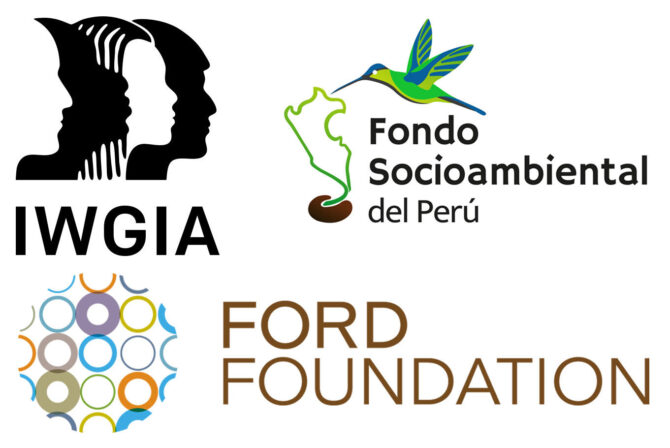
A must read is our November 2024 field report chronicling the second year of an extraordinary initiative designed to strengthen food security, climate resilience, women’s empowerment, economic development, medicinal agroforestry and more!
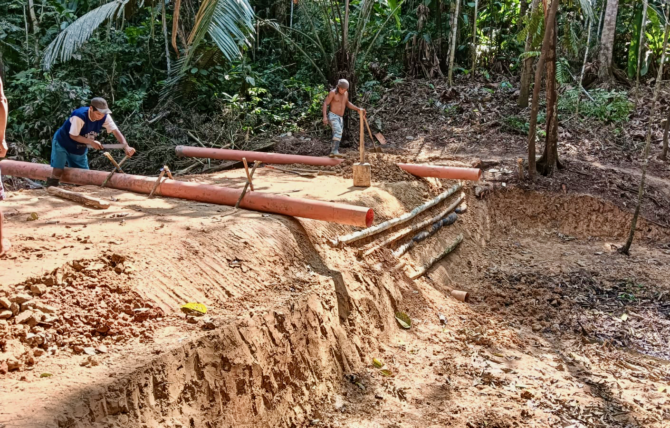
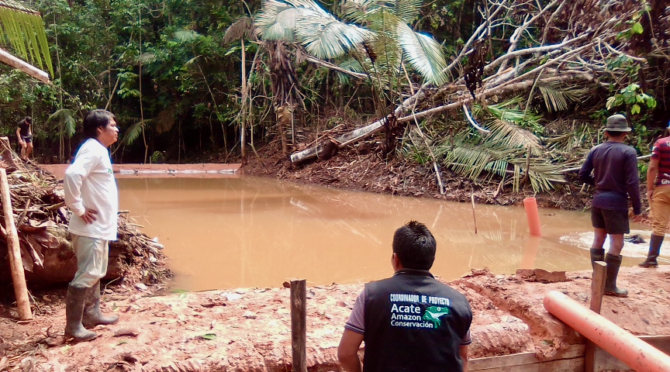
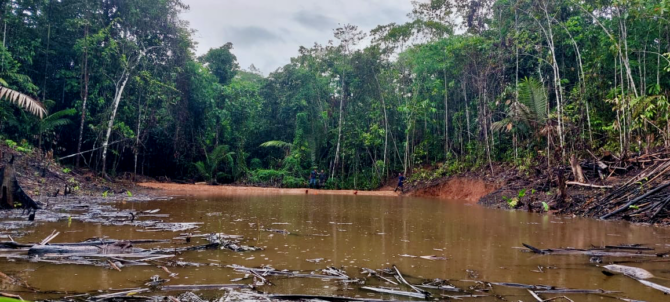
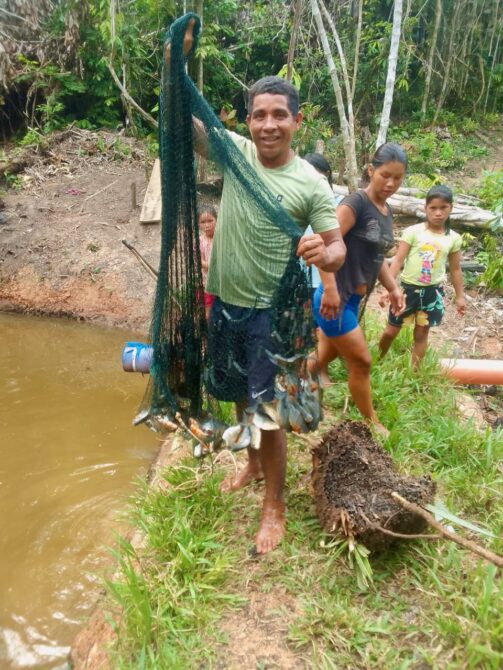
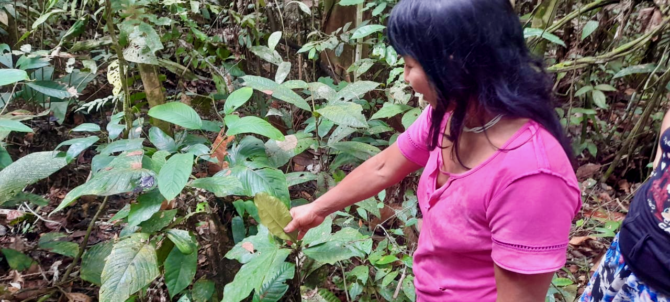
Stay tuned for forthcoming updates on our community-based endangered river turtle conservation program, governance initiative and lots more!
Also, Acaté was recently featured on CNN International and CNN Espanol, and the CNN Espanol series Ancestral Guardians!
Acaté Amazon Conservation is a non-profit organization based in the United States and Perú that operates in a true and transparent partnership with the Matsés people of the Peruvian Amazon to maintain their self-sufficiency and way of life. The Matsés safeguard a critical conservation corridor and shield some of the last remaining uncontacted tribes in isolation from unwanted encroachment from the outside world. Acaté works to protect their forests and way of life through supporting on-the-ground initiatives that are led by the Matsés indigenous people.
Operating on the frontlines of conservation, Acaté’s initiatives over the past decade have included the first indigenous medicine encyclopedia as well as projects with original methodology in sustainable economic development, traditional medicine, medicinal agroforestry, nutritional diversity, regenerative agriculture, integrated aquaculture systems, biodiversity inventory, education, native language literacy, participatory mapping, and protection of uncontacted tribal groups in isolation. All of our initiatives are developed with, led and implemented by the Matsés indigenous people. Donations are tax-deductible and go directly to fund these on-the-ground initiatives that operate with unparalleled transparency.
All content and images copyright 2025 Acaté
